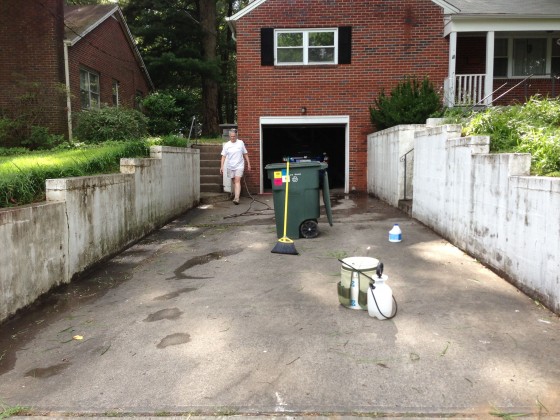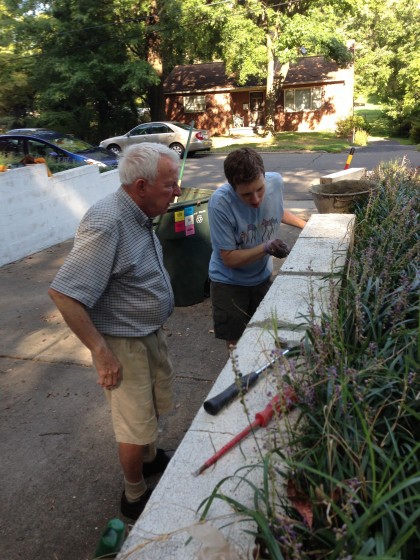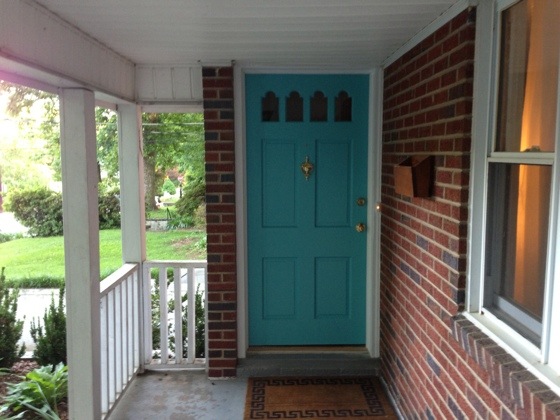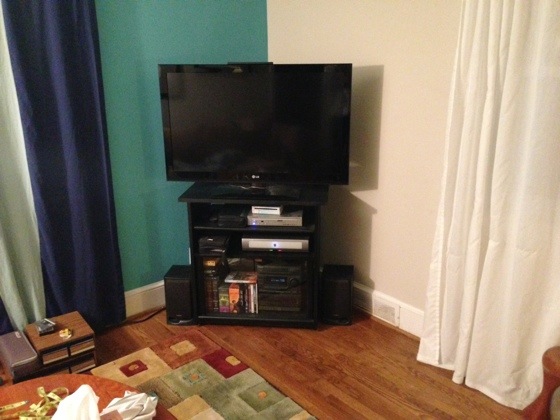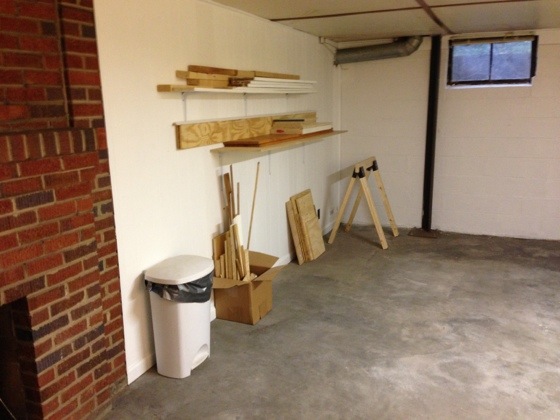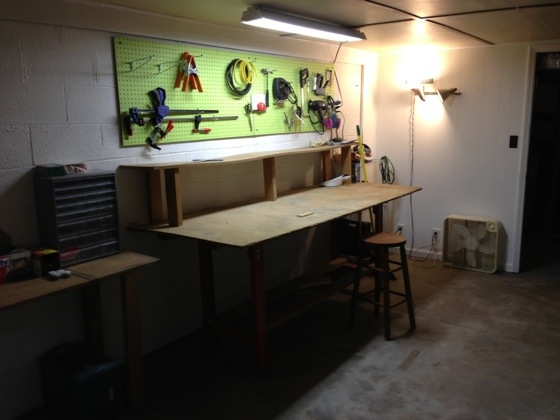When I redid the kitchen, there were a couple of things I just didn’t think about – I hadn’t really considered whether having a phone jack where there had always been a phone jack made any sense, since I don’t use a landline. I also ended up removing two wall outlets, because I built a banquette seat over them. But that phone jack has just stayed on the wall, empty and useless, for two years now. So I figured, maybe it’s time to remove that. And while I was going to be patching wall, maybe I should fix the outlet in the living room, and take out the phone jack that’s attached to a baseboard in there, and maybe even move the coat hook rail that’s placed in such a way that it covers up a lightswitch, leading guests to have no idea how to turn off the living room light. Don’t you love project creep? My one little phone jack removal suddenly became four different little projects. But that was fine – at least I’d only have to get the wall paint out once.
So I took out the phone jacks, and replaced the outlet, and took down the coat hook rail, and patched all the holes. And then I went to put the coat hook rail up in a new spot, and realized that the 4-hook rail I had looked kind of puny in the new place. I figured a bigger one in the same style probably existed, so I’d just go buy that. What I had was dark wood with dark bronze hooks, which I liked well enough. But after visiting three different stores, all I could find in the store were white with white hooks, dark wood with chrome hooks, or white with bronze or chrome hooks. (If you had asked me before yesterday if I cared about the finish colors on my coat rack, I would have laughed at you. Now I suddenly have very strong opinions.) BUT! Home Depot had individual hooks, including nice dark bronze ones. And I have a lot of scrap wood and a lovely clean workbench. So I bought five hooks and brought them home, and spent a couple hours cutting a piece of wood to the right size, sanding the old varnish off it, routing the edges, and staining it. Of course, then the stain needed to dry, so I had to wait a day to seal it with polyurethane.
In the meantime, I painted all the spackled spots where I’d fixed holes in the walls, which look great. The next day, I was going to poly my coat hook rail… but it turned out my poly container didn’t get closed fully the last time I used it, so it was a solid instead of a liquid. Oops. That provoked another trip to the home improvement store – luckily, I also decided to test out one of the hooks to see how it would look on the rail, and discovered that I had to buy shorter screws as well, since the ones that came with the hooks were too long – they’d go all the way through the rail, not just into it. Unhelpful! One trip to Lowe’s later, I had liquid poly and screws of the correct length. So after sealing the rail and installing the hooks, I could hang the coat rack on the wall, and hang all my coats back up. This whole project was the kind of thing that no one else will ever notice, but makes me happier with my house in general.

